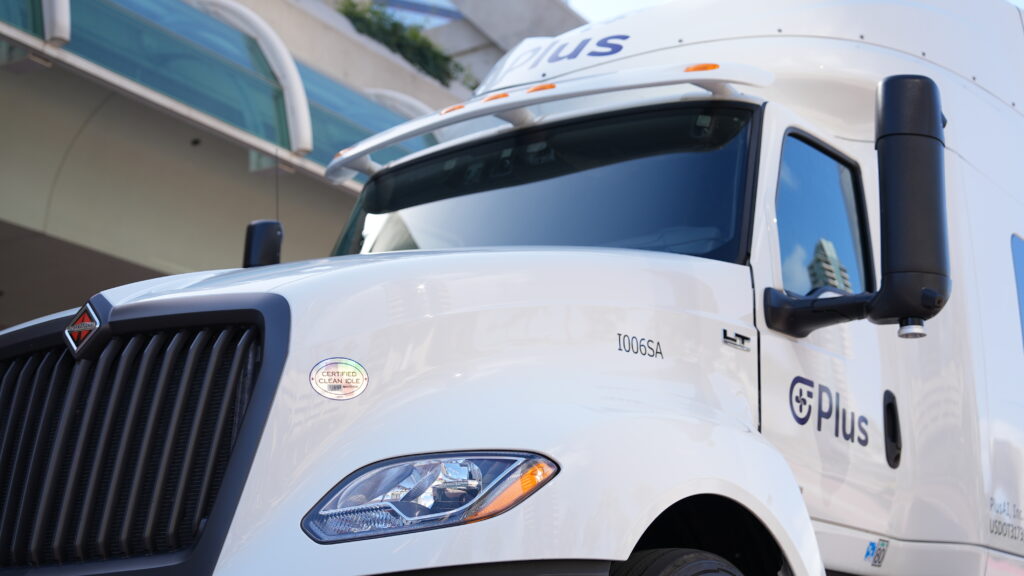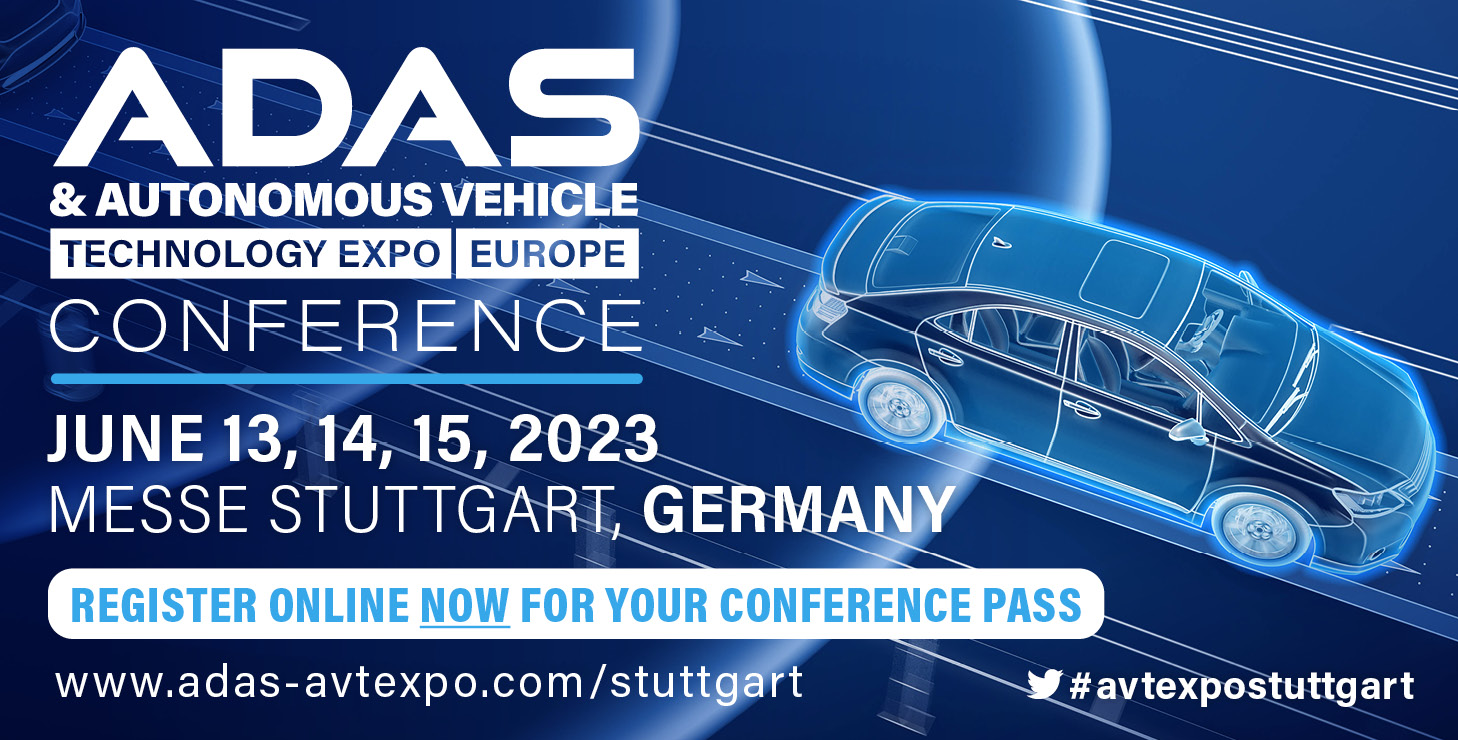 Dr Georg Kuschk, director of perception, Plus, provides an exclusive update on the self-driving truck company’s deployment strategy ahead of his presentation at this year’s ADAS & Autonomous Vehicle Technology Expo, which takes place in Stuttgart, Germany, on June 13, 14 and 15. The event features a conference (rates apply), where Georg will present ‘Deploying autonomous driving technology with software-defined vehicles’.
Dr Georg Kuschk, director of perception, Plus, provides an exclusive update on the self-driving truck company’s deployment strategy ahead of his presentation at this year’s ADAS & Autonomous Vehicle Technology Expo, which takes place in Stuttgart, Germany, on June 13, 14 and 15. The event features a conference (rates apply), where Georg will present ‘Deploying autonomous driving technology with software-defined vehicles’.
As the director of perception at Plus, Dr Georg Kuschk leads deep learning and computer vision researchers and software engineers to enable autonomy for heavy duty trucks, focusing on multi-sensor perception and adjacent areas by employing scalable machine learning approaches. Prior to joining Plus, Georg was a senior engineering manager at Cruise with a focus on radar and camera-based automotive perception. His previous roles also included experience with satellite-based remote sensing imagery at the German Aerospace Center (DLR) and Augmented Reality applications with Metaio. Georg received a PhD in computer science from the Technical University of Munich.
ADAS & Autonomous Vehicle International recently caught up with Georg to hear his thoughts on the self-driving truck sector’s direction of travel.
What is your presentation about?
Plus’s autonomous driving technology is based on an open autonomy platform. It is one single architecture for all autonomy levels ranging from L2 to L4. In my presentation, I will share our experience deploying our first commercial product, a highly automated driving (HAD) solution for heavy duty trucks, which is the first application of our technology, and how this paves the way to a safe and robust full autonomy solution in the future. I will also dive into work we’ve done that enabled us to create a high-performance, affordable, flexible and scalable solution for OEMs. We are excited to share these insights with the audience as we all work together to drive innovation and progress in the autonomous driving industry.
What is the current market outlook for self-driving trucks – when will we see them on the highway?
Autonomous trucking development has come a long way in recent years, with numerous demos and trial operations showcasing clearly how this emerging technology will transform the trucking business. Wide-scale commercialization and deployment, however, depend on the readiness of autonomous driving software, regulations, vehicle platform, and public acceptance. Public acceptance, in particular, may take some time, so educating the industry, the public and relevant stakeholders on the benefits and safety of autonomous trucking is critical.
That said, with the current global driver shortage and rising operating and fuel costs, there is a huge market opportunity for highly automated driving solutions to help fleets improve safety, enhance driver comfort, and reduce fuel costs today. Our driver-in solution, PlusDrive, is doing just that as it is being used by the world’s largest fleets to deliver commercial freight. And as PlusDrive accumulates millions of real-world driving experience, the system continuously learns and feeds the data engine, paving the way for a fully autonomous future.
What are the next mile markers on the road toward Level 4 trucks – and what needs to happen?
Four areas must be ready in order for scalable deployment of Level 4 autonomous trucks to happen: autonomous driving software, hardware including the vehicle platform and redundant systems, regulations and public acceptance.
As an autonomous driving technology developer and enabler, our focus is on building the software and extending the capabilities of our autonomy platform to make it possible to deploy vehicles without drivers in the future. With our driver-in solution already on the road today, we are accumulating real-world experience while paving the way for this driverless future. With our open autonomy software model, we give OEMs the flexibility to choose how they want to work with us to expand or evolve their product roadmap for autonomy; they can choose anything from a black box solution to complete vertical integration. We believe this open approach will unlock more value for our customers as they look to deploy vehicles with higher levels of autonomy.
What are some of the greatest technical challenges, particularly with regard to perception?
Highly automated and autonomous vehicles rely on a combination of sensors such as cameras, lidars and radars to perceive their environment. Interpreting data from these different types of sensors and accurately identifying objects in the environment is critical and challenging to unlock three major sets of features – situational awareness, comprehensive longitudinal planning and control, and comprehensive longitudinal planning and control.
For example, all the conditions that our PlusDrive L2++ system handles rely on lane-level localization and scene understanding, with the HD map being optional. For semi trucks, we need to balance the short-range and long-range accuracy gap while ensuring the solution is reliable and scalable. This is essentially a science-meets-engineering, robustness-meets-scalability and research-meets-production problem, and one of the numerous challenges we’ve overcome in building a high-performance, scalable and affordable L2++ solution.
In fact, mass deployment of our highly automated driving system requires innovations in multiple areas, including sensors, computing, software, data management and safety. Sensing needs to be designed with considerations of performance but also cost, ease of installation and time. Software best practices must be followed to optimize deployment to an automotive-grade computational platform. Every design choice, from auto calibration technology to the role of maps, has to be made by considering the end-user interaction and future maintenance. Different customers have different requirements regarding the type of data we are allowed to collect and use. This, in turn, needs a comprehensive data management strategy. Last but not least, safety while using our system is paramount. So, we have integrated multiple ways to ensure the driver is attentive while using our system.
What key message would you like to convey at the conference and who are you hoping to meet?
As an autonomous driving software company, Plus and our open autonomy platform are uniquely positioned to help OEMs capture more value from the high-growth autonomy market for three reasons: we have a single end-to-end technology stack that meets the requirements of the entire L2 to L4 autonomous driving spectrum; second, our autonomy platform offers a cost-effective and highly competitive solution; and third, we provide customers with a turnkey autonomy solution today which is future-proof and gives them control of their own destiny.
We look forward to connecting with current and potential Tier 1 and OEM friends and customers at the conference!
Don’t miss Georg’s presentation on Day 1, Tuesday, June 13, at the ADAS & Autonomous Vehicle Technology Expo Europe conference (rates apply) – see the website for the full conference program and booking form.



